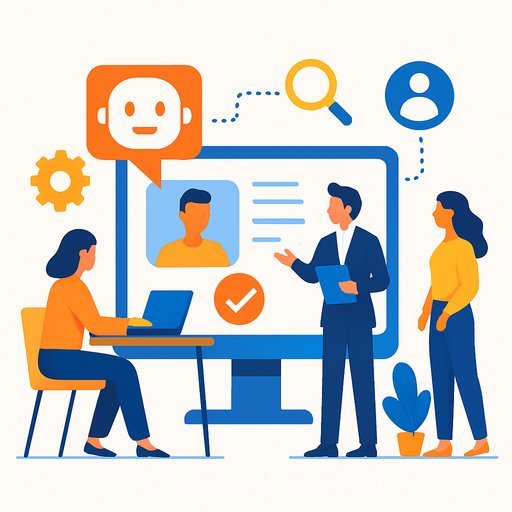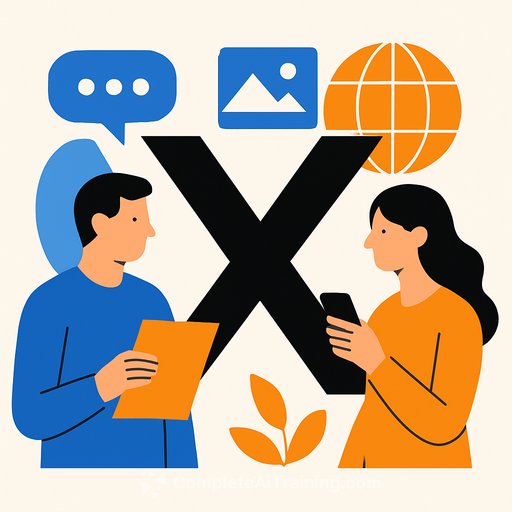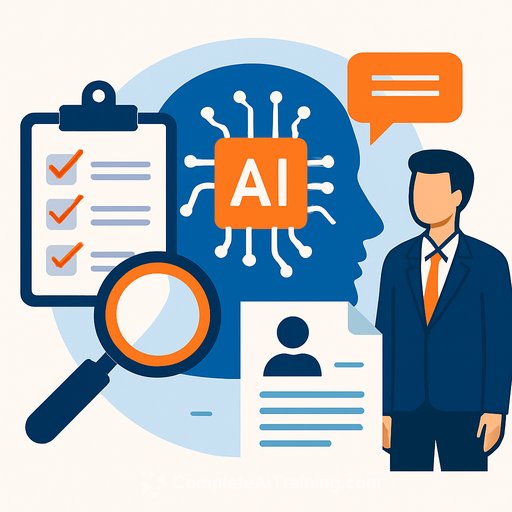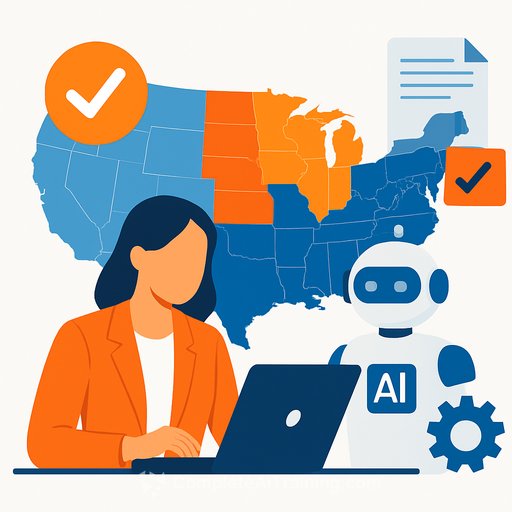AI Chat for HR: A Practical Guide to Intelligent Automation
HR teams are stretched thin. AI chat tools can take the repetitive load off your plate, speed up response times, and free you to handle the human moments that actually move the needle.
This article breaks down where AI chat fits in HR, how to roll it out without breaking trust, and the metrics that prove it's working.
What AI Chat Looks Like in HR
AI chat uses virtual assistants and chatbots powered by natural language processing to answer questions, trigger workflows, and collect data through a simple conversation. It runs 24/7, connects to your systems, and handles the high-volume, low-complexity work that slows HR down.
Think of it as the first line of support: instant answers for FAQs, guided steps for tasks, and a clean handoff to a human when the issue is sensitive or complex.
Where It Delivers Value
- Recruitment: Screen resumes against criteria, answer candidate FAQs, schedule interviews, and conduct structured pre-screens. Tools like an AI search layer can filter candidates and surface best-fit profiles for faster decision-making. For example, AI Search Engine can automate early filtering and outreach.
- Onboarding: Guide new hires through policies, forms, and system setup with step-by-step checklists. Reduce first-week confusion and increase completion rates.
- Employee Support: Handle benefits, payroll, and leave questions instantly with policy-aware answers. Escalate sensitive topics to HR with context included.
- Engagement: Run quick pulse surveys, summarize sentiment, and flag emerging issues so HR can intervene early.
- Performance: Help employees set goals, send reminders, collect progress updates, and support continuous feedback between reviews.
Implementation Playbook
- 1) Pick high-volume use cases: Benefits FAQs, leave requests, interview scheduling, and onboarding are low-risk, high-impact starters.
- 2) Build a clean knowledge base: Centralize policies, FAQs, SOPs, and eligibility rules. Version them. Map each to intents the chatbot can recognize.
- 3) Integrate systems: Connect HRIS/ATS, calendar, ticketing, and identity (e.g., SSO). Common targets include Workday, SuccessFactors, BambooHR, Greenhouse, Lever, and ServiceNow.
- 4) Set guardrails: Define topics that always escalate to a human (grievances, discrimination, mental health). Add clear disclosures and an "escalate to HR" command.
- 5) Pilot, then expand: Launch to one business unit. Measure deflection rate, response time, CSAT, time-to-hire, and onboarding completion. Iterate weekly.
- 6) Upskill your team: Train HR partners on conversation design, prompt standards, and policy updates. For structured learning, see AI courses by job role.
Data, Security, and Fairness
HR data is sensitive. Enforce least-privilege access, encryption in transit/at rest, audit logs, and clear retention rules. Make sure your vendor supports data residency and admin controls HR can understand.
Comply with regulations that apply to your team and geography, such as GDPR. Conduct regular bias checks in recruiting and performance flows; review training data and decision criteria, and document overrides.
Avoid These Pitfalls
- Over-automation: Don't force sensitive issues through a bot. Route them to people quickly.
- Tone-deaf replies: Provide style guides, examples, and blocked phrases. Test responses with real employees.
- Stale content: Assign owners for each policy domain. Set review cadences and alerts when source documents change.
- Shadow IT: Centralize approved tools, single sign-on, and logging. Document who can publish updates.
- One-size-fits-all: Localize policies, holidays, and compliance by region. Add role-based responses.
Metrics That Matter
- Deflection rate: Percent of inquiries resolved without a ticket.
- Time-to-first-response: Average seconds to answer common questions.
- Time-to-hire: From application to offer, plus interview no-show rate.
- Onboarding completion: Percent of tasks done by day 5 and day 30.
- CSAT/eNPS: Satisfaction after bot interactions and quarterly employee sentiment.
- Ticket volume per HR FTE: Shows capacity gained.
30-60-90 Day Roadmap
- Day 30: Select vendor, define 5-10 intents, import policies, set escalation rules, and complete security review.
- Day 60: Pilot recruiting FAQs, interview scheduling, and onboarding checklist. Connect calendar and ATS. Gather feedback and fix gaps weekly.
- Day 90: Add benefits and leave workflows, launch pulse surveys, publish dashboards, and formalize content ownership and SLAs.
Example AI Chat Flows
- Candidate screen: Bot asks role-specific questions, scores against must-haves, schedules with the hiring team, and updates the ATS.
- Onboarding: "Show me my first-week tasks" → bot returns a checklist, links forms, confirms equipment delivery, and reminds the manager.
- Leave request: Bot checks balance, shows policy, routes approval, and updates the calendar and payroll.
- Benefits window: "When is open enrollment?" → bot gives dates, compares plan options, and logs selected changes for HR review.
- Performance: Bot nudges quarterly goal updates, collects self-reflections, and prepares a summary for the manager.
Tools to Consider
Look for an HR-ready chat platform with analytics, secure integrations, and easy content management. For example, ChatlyAI provides an AI chat interface and a searchable layer that can support recruitment and employee self-service. Ensure any vendor offers clear data controls, audit trails, and a fast way to escalate to a human.
Final Take
AI chat gives HR speed and consistency. People bring context, care, and judgment. Use the bot for the mechanical work, keep humans for the moments that matter, and measure everything so you know it's working.
Your membership also unlocks:






